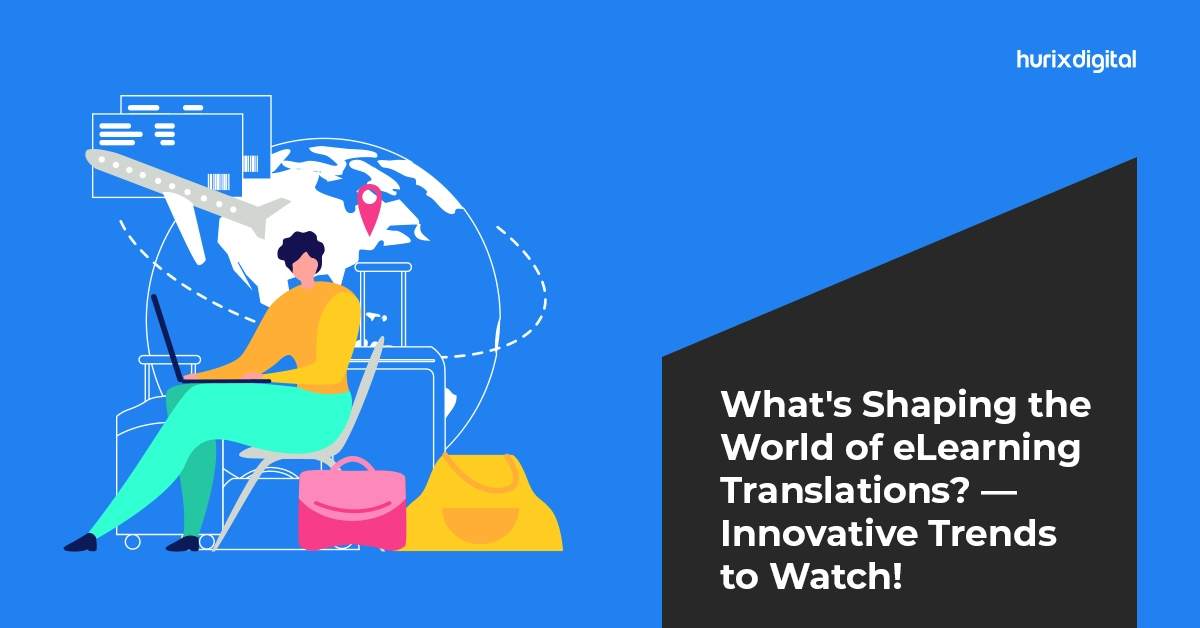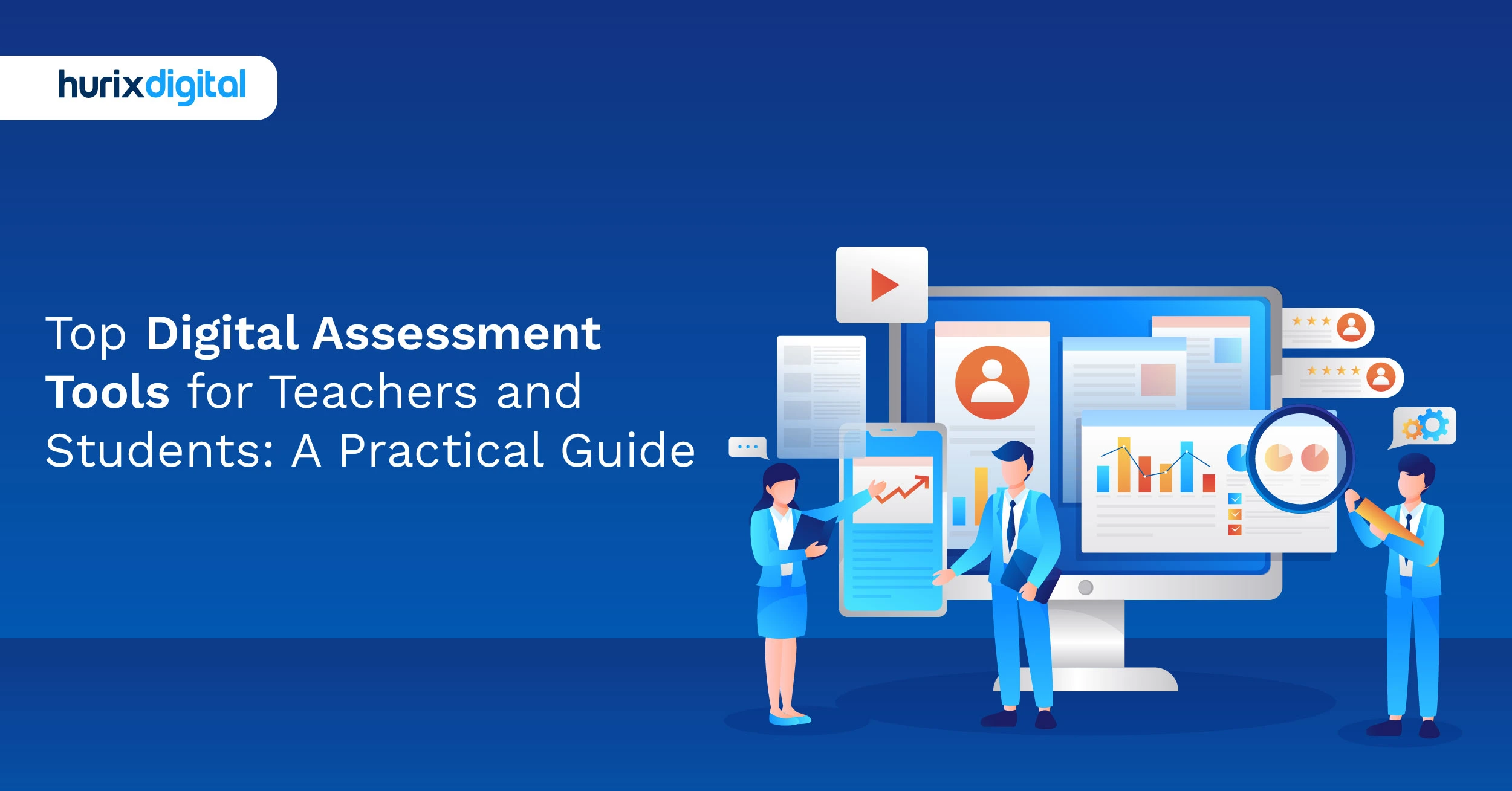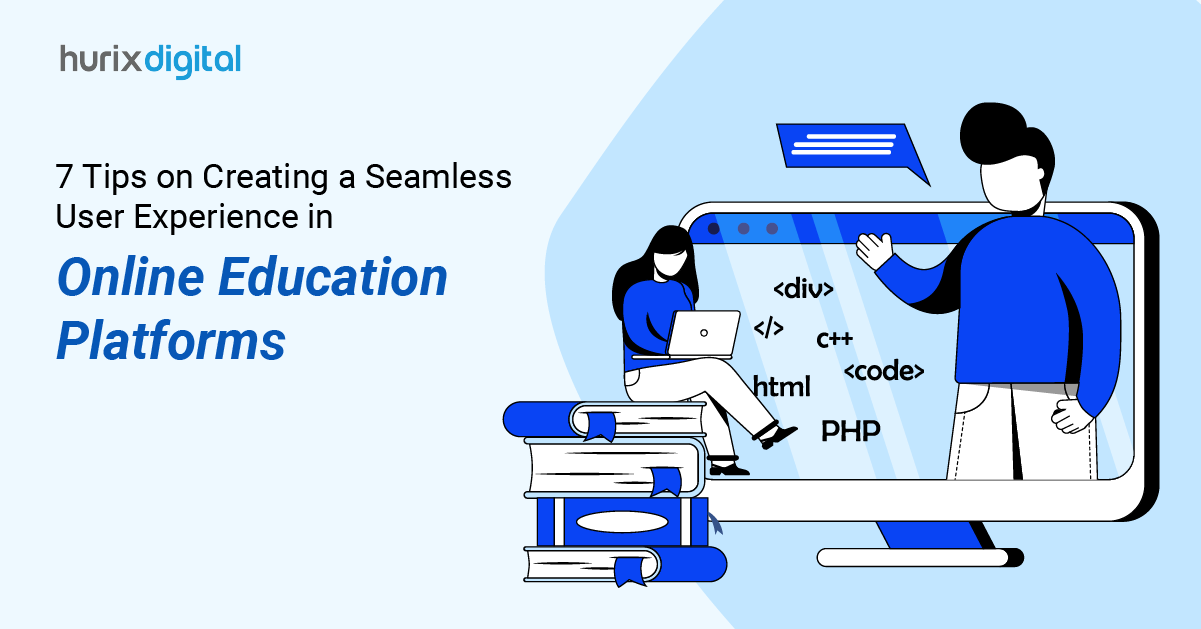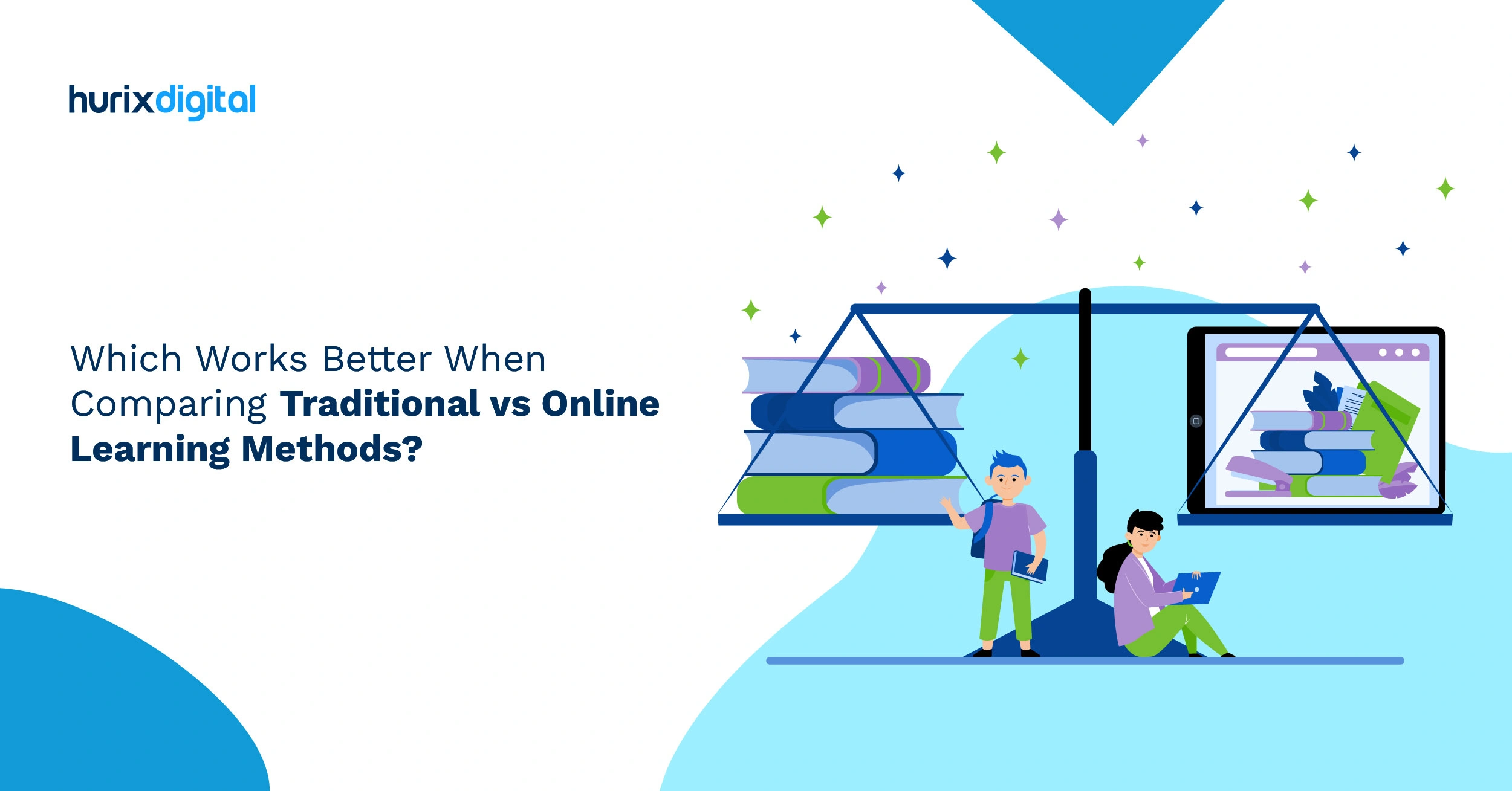
What’s Shaping the World of eLearning Translations? — Innovative Trends to Watch!
Summarize with:
Statistics paint a clear picture of the rising demand for eLearning translations. The global eLearning market is projected to reach a staggering $457.8 billion by 2026, growing at a CAGR (Compound Annual Growth Rate) of 10.3%.
With organizations expanding their global reach and individuals seeking educational opportunities beyond geographical limitations, the importance of delivering effective eLearning content in multiple languages has become paramount.
We explain the key factors driving the rise of eLearning translations and explore the innovative trends that are shaping the future of this dynamic field.
Table of Contents
- The Rise of eLearning Translations: Why It Matters
- Innovative Trends Shaping the Future of eLearning Translations
- Wrapping Up
The Rise of eLearning Translations: Why It Matters?
The digital revolution has fundamentally transformed the way corporate training is delivered. With the rise of eLearning platforms, organizations can now reach a diverse audience regardless of geographical location.
This shift has necessitated a significant increase in the need to translate eLearning content to cater to learners from different linguistic backgrounds. Here’s a closer look at the driving forces behind this trend:
1. The Globalized Workforce and Online Education Landscape
The global workforce is becoming increasingly diverse. A report by PwC projects that by 2030, it will be increasingly difficult to search and retain diverse talent. This trend signifies a growing demand for eLearning content that is accessible to a multilingual audience.
Similarly, the education landscape is undergoing a metamorphosis. With the rise of online cross-cultural learning platforms, individuals worldwide now have access to educational opportunities that were previously unavailable.
Educational institutions are increasingly investing in translating their eLearning materials. This ensures inclusivity and the opportunity to cater to a broader range of learners in a virtual classroom.
2. Breaking Down Language Barriers to Accessibility
Language barriers can be a significant obstacle to effective learning. By offering eLearning content in a learner’s native language, organizations can improve comprehension, engagement, and knowledge retention. This is particularly crucial for complex topics that require a thorough understanding of the material.
Studies have shown that learners who access information in their native language demonstrate a higher level of cognitive processing and achieve better learning outcomes.
3. Enhancing ROI and Market Expansion through eLearning Localization
Translating eLearning content isn’t merely about overcoming language barriers – it’s a strategic investment. By localizing eLearning materials to suit the cultural nuances of a specific target audience, organizations can significantly enhance the return on their investment (ROI).
Localized content resonates better with learners, fosters trust, and increases the overall effectiveness of the training program. Furthermore, offering eLearning content in multiple languages allows organizations to expand their market reach and tap into new customer segments globally.
Also Read: The Impact of AI and Automation on Workforce Development Trends
Innovative Trends Shaping the Future of eLearning Translations
As the eLearning translation automation industry continues to evolve, exciting global learning trends are emerging that are transforming the way companies create and deliver multilingual education and learning experiences. Let’s explore some of the most noteworthy developments:
1. Artificial Intelligence (AI) and Machine Translation (MT) in eLearning
Artificial intelligence (AI) is rapidly transforming various industries, and eLearning translations are no exception. Machine translation (MT) tools powered by AI are becoming increasingly sophisticated, offering the ability to translate large volumes of text quickly and cost-effectively.
This can be particularly beneficial for translating basic eLearning content, such as terminology or user interfaces.
2. The Rise of Neural Machine Translation (NMT) for eLearning
A significant advancement in the field of AI translation is the rise of neural machine translation (NMT). Unlike traditional MT tools that rely on rule-based systems, NMT utilizes deep learning algorithms to analyze vast amounts of bilingual data.
This allows NMT engines to produce more nuanced and accurate translations, even for complex eLearning content. While NMT is not a replacement for human expertise, it offers a valuable avenue for more nuanced and accurate translations, even for complex eLearning content.
3. The Continued Importance of Human Expertise in eLearning Translation
Machine translation tools often struggle with the subtleties of language, particularly when it comes to cultural nuances, humor, and idiomatic expressions. Human translators, on the other hand, possess the linguistic and cultural understanding necessary to ensure the translated content is accurate, conveys the intended meaning effectively, and resonates with the target audience.
For specialized topics requiring in-depth subject matter expertise, human translators with a background in the specific field can ensure the translated content conveys technical details accurately and understandably.
4. Focus on Multimedia Translation and Language Localization
Modern eLearning content often incorporates multimedia elements like images, videos, and interactive components. To deliver a seamless learning experience in multiple languages, successful eLearning translation goes beyond just translating text. Images and videos might contain text, cultural references, or humor that require localization.
This could involve re-recording voiceovers in different languages, adapting visuals to suit cultural sensitivities, or replacing text overlays with localized versions.
5. Mobile Translation Technology and the Rise of Microlearning
With an increasing number of learners accessing content on mobile devices, translated content needs to be mobile-friendly. This means breaking down lengthy text into smaller chunks, adapting the layout for better readability, and ensuring compatibility with different mobile operating systems.
Microlearning focuses on delivering bite-sized learning modules that are easily digestible on the go. Translating microlearning content requires a high degree of accuracy and conciseness to ensure the key message is effectively conveyed within the limited space.
6. The Growing Demand for Remote Collaboration Tools
The eLearning translation process often involves collaboration between various stakeholders, including subject matter experts, instructional designers, translators, and reviewers. As the global eLearning market expands, the need for efficient remote learning tools is becoming increasingly important.
Cloud-based translation management systems (TMS) provide a centralized platform. It allows for storing eLearning content, managing assignments effectively, and facilitating real-time collaboration between team members located anywhere in the world.
Check out EXCLUSIVE: Hurix Mini-Book: Effective Training Techniques For Enterprises With Distributed Workforce
Wrapping Up
By leveraging these innovative trends and technologies, along with the irreplaceable expertise of human translators, organizations can create high-quality, localized eLearning content that effectively engages a global audience and empowers learners to achieve their goals.
Hurix Digital is a leading provider of comprehensive eLearning solutions, including expert translation and localization services. Our team of experienced linguists and learning specialists can help you develop engaging and effective eLearning content that empowers your learners, regardless of their location or language. Contact us today to explore our full range of services.
Summarize with:

Performance, Results, Growth, and Life-Long Learning define my professional life. I am passionate about making workplace learning planful, purposeful, and impactful. I take pride in partnering with clients and bringing them the best in learning design and creating solutions that address business challenges.
 A Space for Thoughtful
A Space for Thoughtful 



